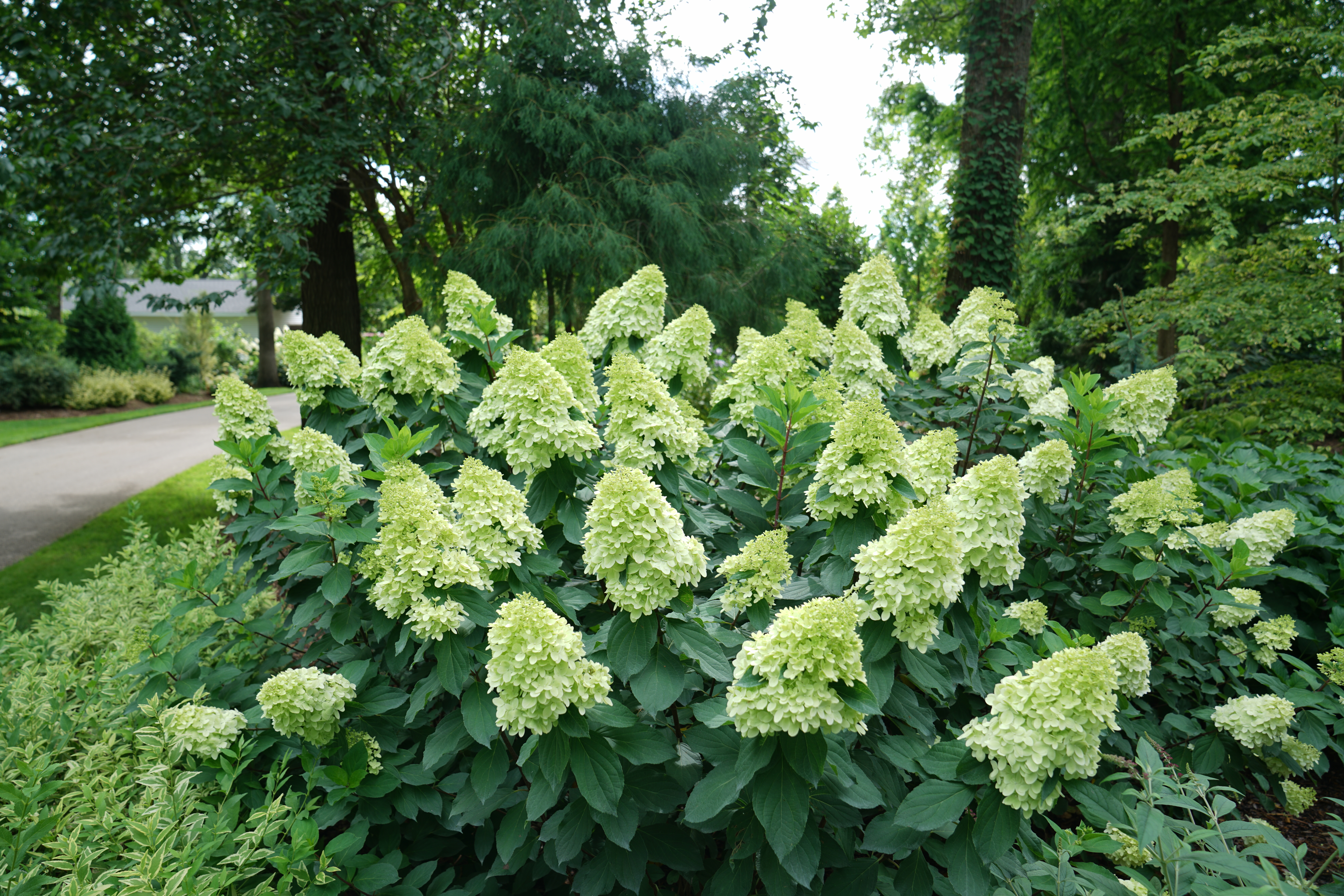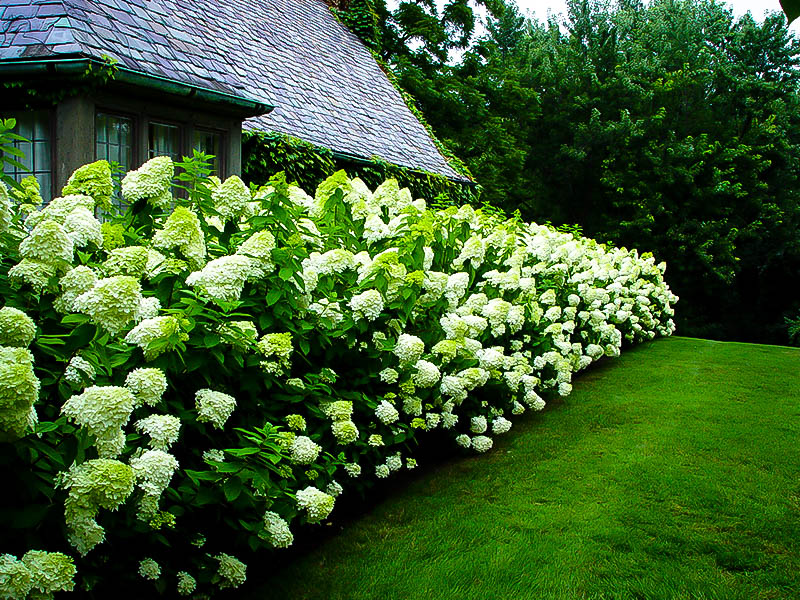Limelight Hydrangea: The Sunloving Shrub That Will
Limelight Hydrangea: The Sun-Loving Shrub That Will
Limelight hydrangea is a popular choice for gardeners because of its large, showy blooms and easy care. This sun-loving shrub is hardy in zones 3-9 and can grow to be 6-8 feet tall and wide. The blooms start out lime green in the summer and gradually turn white, pink, and burgundy as the season progresses. Limelight hydrangeas are known for their long bloom time, which can last from early summer to late fall.
In addition to their beauty, limelight hydrangeas are also relatively low-maintenance. They need full sun to partial shade and well-drained soil. They are drought tolerant once established, but they appreciate regular watering during the first year after planting. Limelight hydrangeas do not require a lot of fertilizer, but a light application of a balanced fertilizer in the spring can help promote blooms.
If you are looking for a beautiful and easy-care shrub for your garden, limelight hydrangea is a great option. Here are some additional tips for growing and caring for limelight hydrangeas:
- Plant limelight hydrangeas in full sun to partial shade.
- Amend the soil with compost or other organic matter before planting.
- Water regularly, especially during the first year after planting.
- Fertilize with a balanced fertilizer in the spring.
- Deadhead spent blooms to encourage new growth.
- Prune in late winter or early spring, before new growth begins.
With proper care, limelight hydrangeas will thrive in your garden for many years to come.
Main Content
Planting Limelight Hydrangeas
When planting limelight hydrangeas, it is important to choose a location that receives full sun to partial shade. The soil should be well-drained and amended with compost or other organic matter. Dig a hole that is twice as wide as the root ball and plant the shrub at the same depth that it was planted in the container. Backfill the hole with soil and water thoroughly.
Watering Limelight Hydrangeas
Limelight hydrangeas need regular watering, especially during the first year after planting. Once established, they are more drought tolerant, but they will still appreciate a deep watering once a week during hot, dry weather.
Fertilizing Limelight Hydrangeas
Limelight hydrangeas do not require a lot of fertilizer, but a light application of a balanced fertilizer in the spring can help promote blooms. Use a fertilizer that is high in nitrogen and phosphorus.
Deadheading Limelight Hydrangeas
Deadheading is the process of removing spent blooms. This will encourage new growth and more blooms. To deadhead, simply pinch off the spent blooms with your fingers.
Pruning Limelight Hydrangeas
Limelight hydrangeas can be pruned in late winter or early spring, before new growth begins. Pruning is not necessary, but it can help to shape the shrub and remove any dead or damaged branches. To prune, use sharp pruning shears and cut back the branches by one-third to one-half.
Troubleshooting Limelight Hydrangeas
If your limelight hydrangeas are not blooming, there are a few possible reasons. First, make sure that they are getting enough sun. Limelight hydrangeas need at least 6 hours of sunlight per day. Second, make sure that they are getting enough water. Limelight hydrangeas need regular watering, especially during the first year after planting. Third, make sure that they are fertilized properly. Limelight hydrangeas do not require a lot of fertilizer, but a light application of a balanced fertilizer in the spring can help promote blooms.
If your limelight hydrangeas are wilting, it is likely because they are not getting enough water. Water them deeply and regularly, and they should perk up. If the wilting continues, it may be a sign of a more serious problem, such as root rot. If you suspect root rot, contact a professional for help.
Conclusion
Limelight hydrangeas are a beautiful and easy-care shrub that can add a touch of elegance to any garden. With proper care, they will thrive for many years to come.
If you're looking for more information about limelight hydrangea sun, I recommend visiting . This website has a wealth of information about this beautiful plant, including its care requirements, planting tips, and more. You can also find photos and videos of limelight hydrangea sun in its natural habitat, as well as in a variety of gardens and landscapes.
One of the most important things to know about limelight hydrangea sun is that it needs at least 4-6 hours of sunlight per day. In fact, the more sun it gets, the bigger and brighter its flowers will be. If you live in a warm climate, you may want to consider planting your limelight hydrangea sun in partial shade, as too much sun can scorch its leaves.
Another important thing to keep in mind is that limelight hydrangea sun is a relatively drought-tolerant plant. However, it will still appreciate regular watering, especially during hot, dry weather. You should also fertilize your limelight hydrangea sun once a year in the spring, using a balanced fertilizer.
With proper care, limelight hydrangea sun can be a beautiful and long-lived addition to your garden. So if you're looking for a stunning flowering shrub that doesn't require a lot of fuss, I encourage you to visit for more information.
FAQ of limelight hydrangea sun
- How much sun does a limelight hydrangea need?
Limelight hydrangeas need full sun, which is at least 6 hours of direct sunlight per day. If they don't get enough sun, they may not bloom as well or their leaves may turn yellow.
- Can I plant a limelight hydrangea in the shade?
No, limelight hydrangeas do not do well in the shade. They need at least 6 hours of direct sunlight per day to thrive. If you plant them in the shade, they may not bloom at all or their leaves may turn yellow.
- What happens if I overwater my limelight hydrangea?
Limelight hydrangeas are susceptible to root rot if they are overwatered. To avoid this, water them deeply once a week, and allow the soil to dry out slightly between waterings.
- How do I know if my limelight hydrangea is getting too much sun?
If your limelight hydrangea is getting too much sun, its leaves may turn yellow or brown. It may also wilt or drop its leaves. If you see any of these signs, move your hydrangea to a location with more shade.
- Can I propagate limelight hydrangeas from cuttings?
Yes, you can propagate limelight hydrangeas from cuttings. However, it is important to note that this method is not always successful. To propagate a limelight hydrangea from a cutting, you will need to take a 4-6 inch cutting from a healthy plant in the spring or early summer. The cutting should have at least 3-4 leaves. Dip the cut end of the cutting in rooting hormone and plant it in a pot of well-draining potting mix. Keep the soil moist but not soggy, and place the pot in a location with bright indirect sunlight. In a few weeks, you should see new roots forming. Once the roots are established, you can transplant the cutting to a larger pot or directly into the ground.
Image of limelight hydrangea sun
5 different images of "limelight hydrangea sun" from pinterest.com:
- A large limelight hydrangea bush in full bloom, with the flowers facing the sun and glowing in a pale pink color.

- A close-up of a single limelight hydrangea flower, showing the delicate petals and the way the sunlight is reflected off of them.

- A row of limelight hydrangea bushes planted along a sunny walkway, their flowers in shades of pink, white, and green.

- A limelight hydrangea bush in a garden, its flowers surrounded by other plants and flowers in shades of blue, yellow, and purple.

- A limelight hydrangea bush in a vase, its flowers arranged in a way that shows off their beauty.

Post a Comment for "Limelight Hydrangea: The Sunloving Shrub That Will"